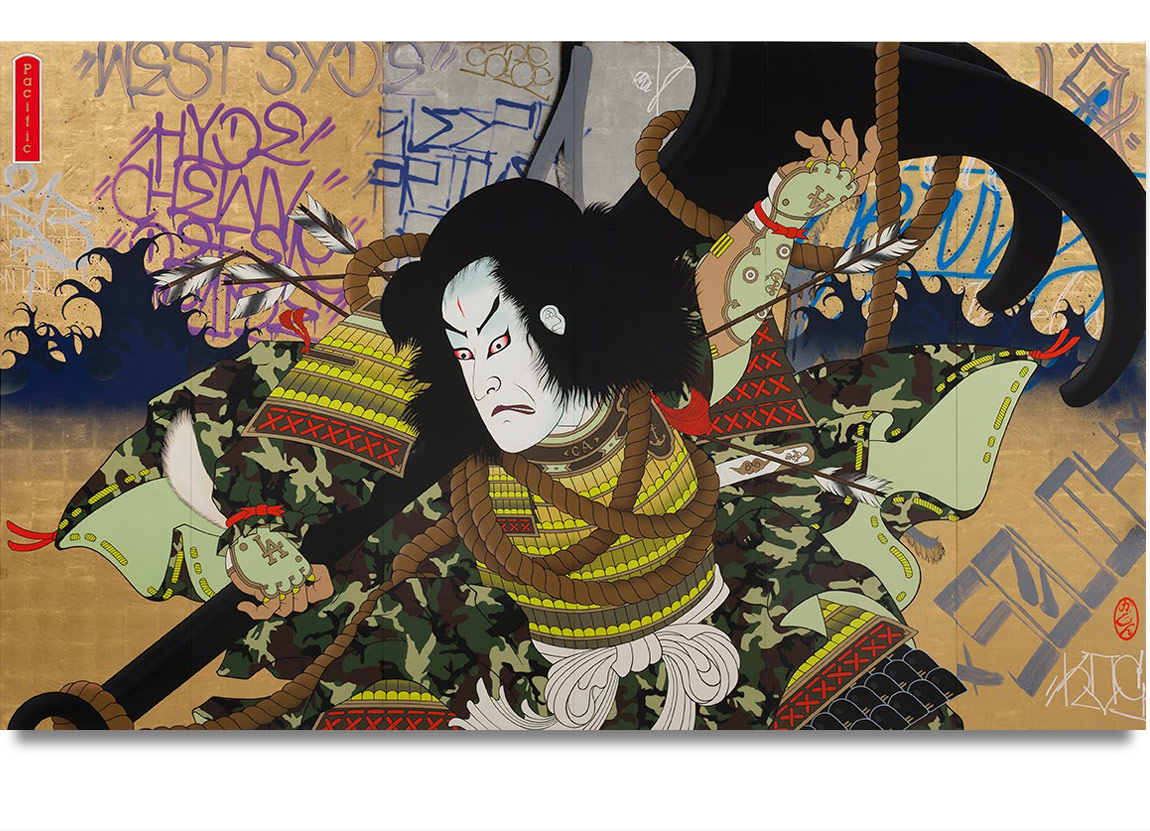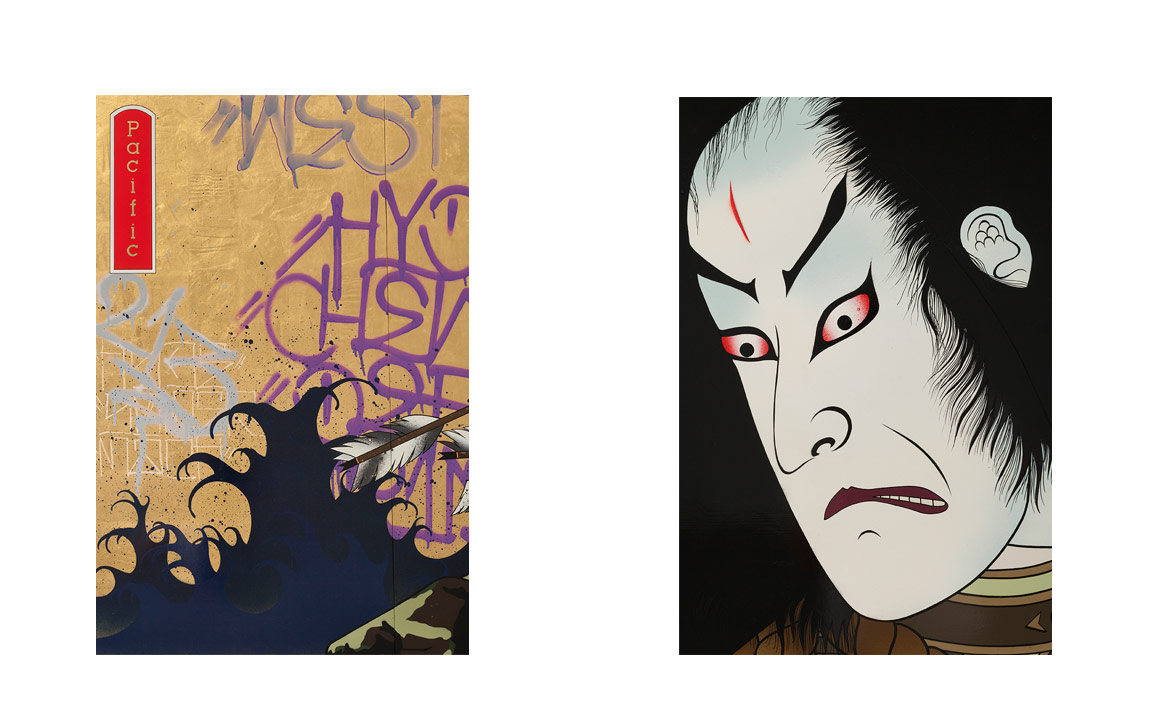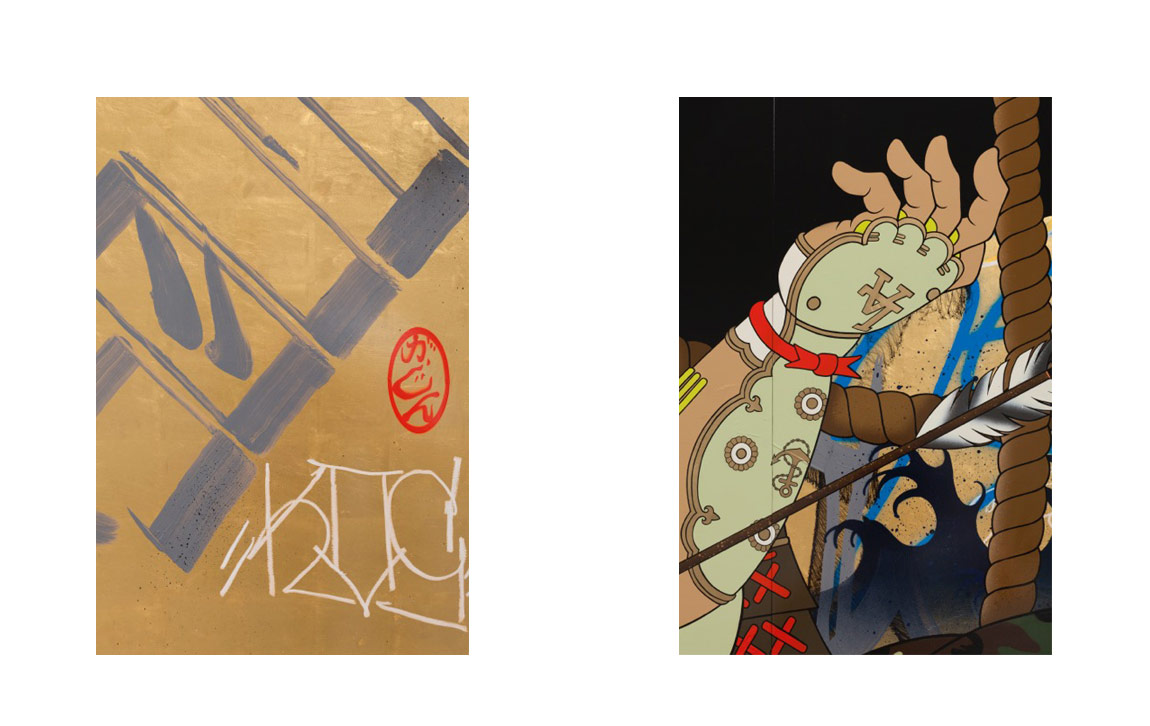

Title
Pacific Ghost
Medium
spray paint, acrylic paint, paint markers, Mean Streak, 12k white gold and 24k gold leaf on wood panels
Dimensions
6 panels, overall:
72 x 120 in. (182.9 x 304.8 cm)
Year
2014
The painting derives from a print made by Kokunimasa (1874-1944). Created in 1895, the original print depicts the actor Onoe Kikugoro in full Kabuki costume. Although the play is unidentified, the performance took place at the Shintomi Theatre. In this scene, Onoe is acting as Taira No Tomomori, the leader of one of the most powerful clans in Japan.
The Taira clan (also known as the Heike clan) was known to wage wars against other rival clans to gain land control or to exert their superiority. However, they were not always victorious, and this imagery portrays Tomomori's death at sea. Realizing that the Taira forces would be defeated by the Genji clan at the Battle of Dan-no-Ura, many of the Taira samurais committed suicide, some by throwing themselves into the ocean (as was customary for samurais to commit suicide in the face of defeat, refusing their enemy the satisfaction of the kill). To ensure the Genji would not capture his body, Tomomori grabbed an anchor and leapt into the water. It is said that Tomomori's ghost forever carries the anchor and roams the sea floor. It is also believed that a common crab known as the "Heike" crab bears the semblance of a samurai's face on its shell, as reincarnations of the samurais who lost their lives in this battle.




Measuring 6 x 10 feet, this is the largest work by Fujita that features a single figure. The camouflage pattern (often associated with American soldiers) on the figure's garb was an intentional choice to pay homage to historic battles that took place in the Pacific between Japan and America during World War II.
